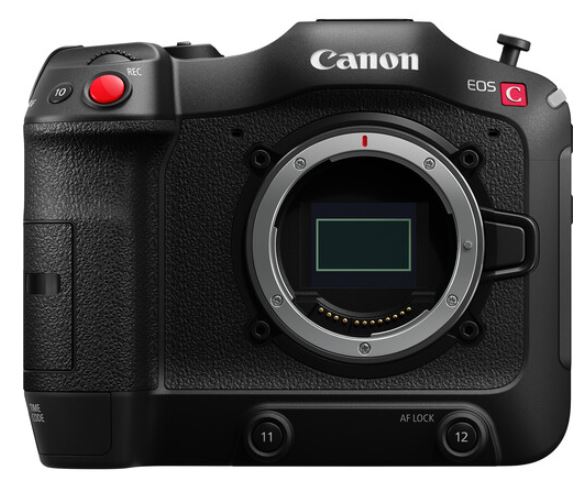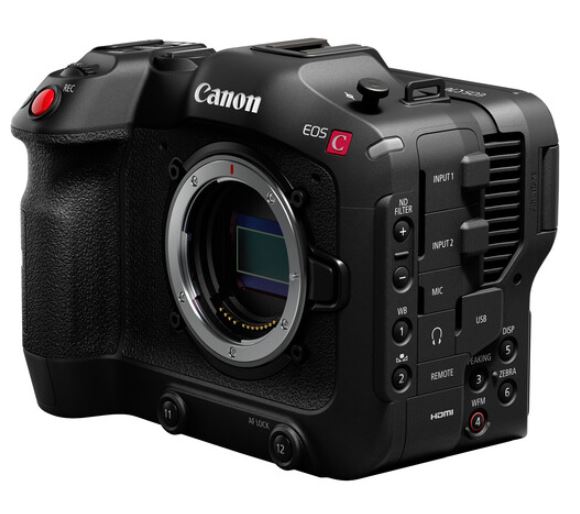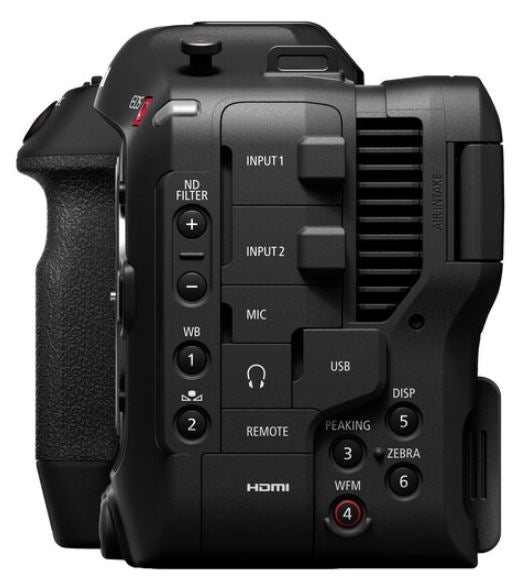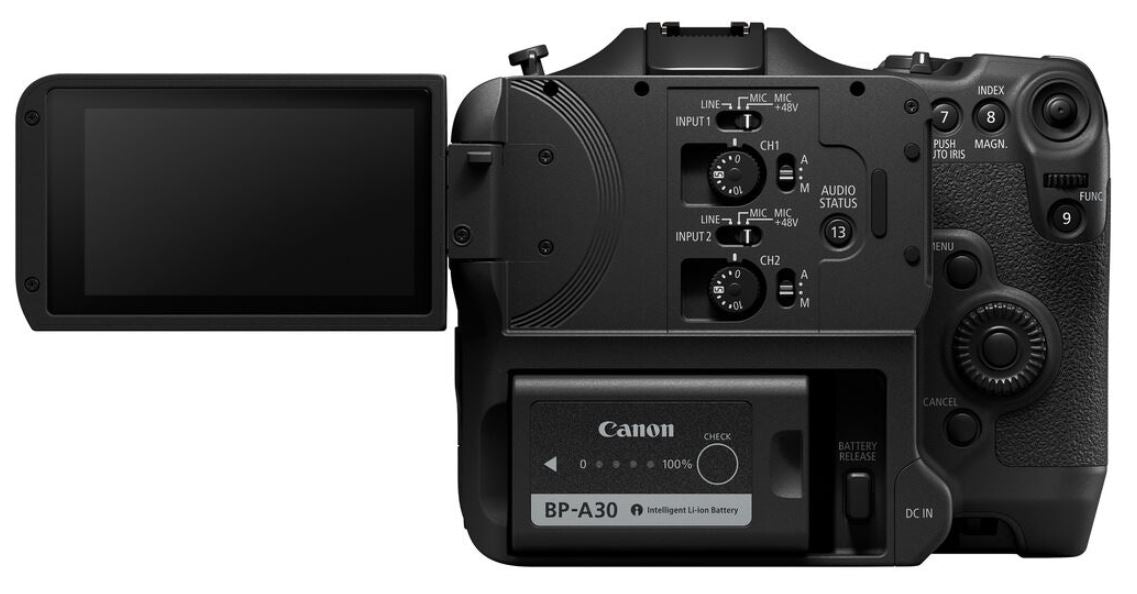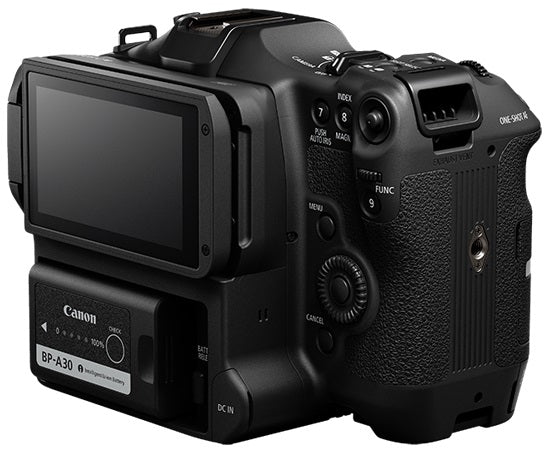GOT ONE TO SELL?
We buy used gear at top market value!
Description
The EOS C70 features Canon’s next generation Super 35mm Dual Gain Output (DGO) Sensor. This new sensor is capable of a total dynamic range in excess of 16 stops and includes Canon’s exclusive Dual Pixel CMOS Autofocus technology.
SUPER 35MM DUAL GAIN OUTPUT SENSOR.
The DGO Sensor is a newly developed imaging system that generates high dynamic range and maintains low noise levels by reading out each photodiode with two different gains. It combines the two with a saturation prioritizing gain for bright areas, and a lower noise prioritizing gain for darker areas.
DIG!C DV7 IMAGE PROCESSOR.
The EOS C70 features Canon’s DIG!C DV7 image processor that takes the extensive RAW information captured from the imaging sensor and processes it for output. DiG!C is also the engine behind features such as high frame rate recording, Dual Gain Output (DGO) Sensor, Dual Pixel Autofocus, HDR (PQ) output, Electronic Image Stabilization, and proxy recording.
CANON LOG 2 & 3, PQ, & HLG RECORDING.
The EOS C70 supports both Canon Log 2 and Canon Log 3 Gamma. In post-production, Canon Log is designed to reproduce the entire tonal range that the CMOS image sensor is capable of. Log workflows provide the user with higher dynamic range, more highlight and shadow retention, and more flexibility in color grading.
Canon Log 2 provides the largest dynamic range and image detail. However, while Canon Log 2 provides the most post-production flexibility and full dynamic range of the sensor, it typically requires more time in post and color correction.
For users looking for most of the benefits of a log workflow, but with shorter turnaround times, Canon Log 3 provides an alternative with only a slightly reduced dynamic range of 14 stops.
The EOS C70 also features HLG and PQ compliance with ITU-BT.2100 in Custom Picture (CP) presets, allowing users to record HDR footage instantly without grading.
EF LENS COMPATIBILITY WITH EF-EOS R 0.71X.
The EOS C70 is the first Cinema EOS camera engineered with a built-in RF mount making it compatible with Canon’s expanding line of high-performance RF lenses. The short flange distance helps to dramatically reduce body depth, resulting in a more compact design.
In addition to RF lenses, the EOS C70 offers tremendous flexibility by also being compatible with Canon’s broad line of award-winning EF lenses thanks to the new EF – RF optical adapter. This adapter converts light transmission from full-frame to Super 35mm image format. It extends the angle of view and optical sensitivity, while seamlessly integrating with the camera’s optical corrections. mount adapter.
DIRECT TOUCH CONTROL.
The EOS C70 is equipped with Direct Touch Control which allows easy access to commonly used menu settings on the fully-rotatable LCD screen. Users will be able to simply touch the screen to start/stop recording, access file format and resolution, set ISO/Gain, color temperature and iris, and display important settings. Shooting settings that were once in various places of the menu can now be accessed with one hand, allowing for on-the-spot changes while holding the camera.
9X16 VERTICAL SHOOTING.
The EOS C70 supports vertical shooting, which is crucial for creators looking to capture content for smart devices and digital signage. The user interface can be switched to support vertical shooting with the same feel as horizontal shooting. A 1/4/20 tripod hole is built into the side of the camera grip, allowing users to easily attach a tripod without special accessories.
NEW UNIQUE, COMPACT BODY DESIGN.
The EOS C70 features a new uni-body design that exhibits a compact form factor and an ergonomic built-in grip making handheld shooting easy and comfortable.
BUILT-IN MINI-XLRS.
The EOS C70 is equipped with two mini-XLR audio input terminals for professional audio recording. Additionally, manual audio control dials let users intuitively and quickly adjust the audio control.
BUILT-IN NEUTRAL DENSITY FILTER SYSTEM.
The newly-developed thin, motorized ND filter unit has been specifically designed for the RF mount’s short flange back. It offers up to 10 stops of ND, allowing users to shoot in various lighting conditions.
DUAL PIXEL CMOS AF & EOS ITR AF X.
Canon’s Dual Pixel CMOS AF technology uses every pixel on the imaging sensor to detect focus and to capture actual image information, offering users high precision focusing and exceptional image quality.
The EOS C70 is the first Cinema EOS camera to feature EOS iTR AF X, which includes a head detection algorithm developed with deep learning technology. In Face Detection mode, the AF works with this advanced algorithm to dramatically improve distance measuring and tracking reliability.
DUAL PIXEL FOCUS GUIDE.
The EOS C70 also features Dual Pixel Focus Guide, which is an innovative UI that gives users both front- and back-focus information telling users if the focus position is in the back or the front, aiding in smooth pulls during manual focus.
ELECTRONIC IMAGE STABILIZATION WITH COORDINATED CONTROL.
For the first time in a Cinema EOS camera, enhanced image stabilization is available with coordinated control. With an RF lens and the electronic IS in the EOS C70, coordinated control optimizes hand-shake correction, resulting in better anti-vibration performance than the conventional EF lens and electronic IS together.
AUTO ISO/GAIN CONTROL.
The EOS C70 is the first Cinema EOS camera to feature Auto ISO and Gain Control. EOS C70 can automatically adjust sensitivity by utilizing the DGO sensor characteristics to switch gain smoothly, helping users concentrate on framing without worrying about aperture and other camera settings when moving from indoor to outdoor locations with significant changes in lighting.
HIGH FRAME RATE; 4K 120P & 2K CROP 180P.
The EOS C70 is capable of ultra-high frame rates with its new chip design and powerful DiG!C DV7 processor. Frame rates up to 120 fps can be obtained in 4K, while 2K CROP mode provides even greater flexibility with speeds up to 180 fps. The EOS C70 supports Dual Pixel CMOS AF, even when shooting at high frame rates, keeping the camera in focus even when mounted on gimbals or drones.

